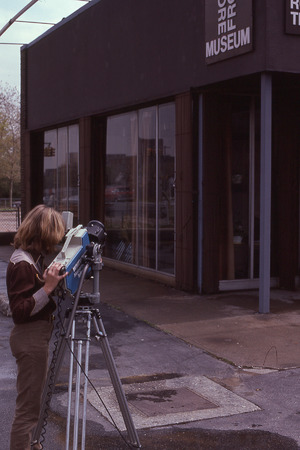Store Front Museum facts for kids
The Store Front Museum was a special place in Queens, New York. It was a community museum that became a hub for the African American community. People went there for art, culture, and to learn.
Artist Tom Lloyd started the museum in 1971. It was on Liberty Avenue, in what used to be a tire shop. Tom Lloyd was a well-known artist before he came to Queens. He opened the museum in February 1971 to share and celebrate African-American culture. He called it "Store Front" because he wanted it to feel like a part of the neighborhood. Over the years, the museum hosted many things: art shows, concerts, plays, karate lessons, dance classes, and fun festivals. Many of the items in the museum were given as gifts by people.
Contents
Exciting Events and Exhibits
The museum quickly became known for its interesting events.
First Big Art Show
In 1972, the museum held its first major art show called Paintings and Drawings by Richard Mayhew. This was a team effort with The Metropolitan Museum of Art. It showed many of Richard Mayhew’s artworks from different galleries in New York City. This exhibit helped the museum get a lot of attention.
Special Collections
The museum also had its own collection of important items. These included artworks, books, photos, and documents. One very popular exhibit in 1985 was "Early Photographs and Documents of African-Americans in Queens County, New York." This show looked at the lives of enslaved people and freedmen in Queens from 1683 to 1941. It was based on a big research project and a book called A Study in Triumph: African-Americans in Queens County, New York 1683-1983.
Unique Items in the Collection
The museum's permanent collection grew over time. It included:
- Materials about African-Americans in Queens.
- A fishing canoe from Ghana, given by the Mystic Seaport Museum.
- Art by Romare Bearden, a famous artist.
- The Daisy Jones Collection of Black Literature.
The Ghanaian fishing canoe was later given to the Smithsonian Institution in 1993.
Paul Robeson Theatre and Festivals
In 1972, the museum opened the Paul Robeson Theatre. This theater had 300 seats and hosted many plays and performances. Famous people like playwright Ed Bullins and actor Roscoe Orman taught classes there. Noted drummer Milford Graves taught drumming classes.
The museum also started the African Festival in 1971. This two-day event took place on the museum's outdoor space. It featured live performances and displays of arts and crafts from different African cultures. Thousands of people came to the festival every year.
Community Programs
The museum also hosted many special programs and meetings. These events aimed to help the community learn and grow. They included:
- Discussions about the justice system for young people.
- Workshops on finding out about family history.
- Seminars on housing, education, health, and jobs.
- A blood drive to help people with Sickle Cell Anemia.
- Meetings for local businesses and professional groups.
Why the Museum Closed
Sadly, the Store Front Museum had to close its doors.
Eviction and Relocation
In January 1985, the museum received an eviction notice. This was because York College needed to expand. For the next year and a half, Tom Lloyd worked hard to find a new home for the museum. On September 2, 1986, after 15 years, the museum moved to a temporary spot at 195-45 Jamaica Avenue in Hollis, New York.
Mr. Lloyd found a good building at 165-20 Hillside Avenue. He was trying to get a long-term lease from the city. But in 1988, the city denied his request and decided to sell the property instead.
Permanent Closure
In 1988, after a long struggle, the museum could not get the property and closed for good.
Tom Lloyd's Continued Activism
Even after the museum closed, Tom Lloyd kept working to help the community.
Saving the Latimer House
In early 1988, he and Rev. Dr. Timothy P. Mitchell started a project to save the Lewis Howard Latimer house. This historic house was at 137-53 Holly Avenue in Flushing, New York. Mr. Lloyd learned that the house was in danger of being torn down.
He and Rev. Mitchell quickly formed "The Committee to Save Latimer House." They got support from many important people, including Claire Shulman, who was the Borough President of Queens. They even asked for the house to be named a landmark to protect it.
Moving the House
On June 30, 1988, the committee signed a contract to move the house. Even though their request for landmark status was denied in July, they didn't give up. They received large donations from the General Electric Foundation, the land developer, and the city to pay for the move.
On December 13, 1988, the house was moved from Holly Street to Leavitt’s Athletic Field. In 1989, they created the Lewis H. Latimer Fund, Inc., to continue their work. In 1995, after many years of effort, the house was finally named a New York City Landmark. That same year, Mr. Lloyd gave his important papers about these efforts to the Queens Library Archives.


